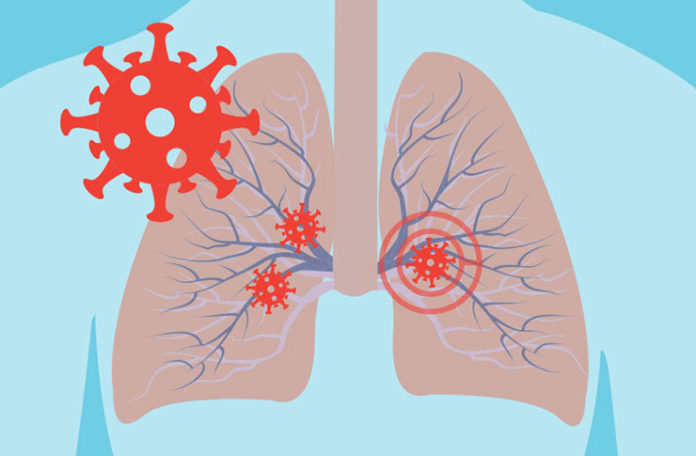
While some people may feel like we’re almost across the finish line to defeat COVID-19, many who contracted the virus are still struggling with health problems. One of the more specific potential results from COVID-19 is the idiopathic inflammation that occurs in a percentage of patients. This issue seems to attack vital organs but patients who suffer heart and lung damage seem to be getting the worst results.(1) “This creates a two-sided problem as some COVID patients will no longer be able to donate their organs and they themselves may need an organ transplant down the road. This puts the viability of organs at risk,” said Sim Shain, CEO of ParaFlight EMS and organflights.com.
Physicians, early on in the pandemic, found an unexpected percentage of patients hospitalized with COVID-19 had elevated levels of cardiac troponin, a marker of injury to the heart muscle.(2) Then came a rash of patients demonstrating ground-glass opacities in the lungs.(3) Although medical science is still learning about and adapting to post-COVID 19 health issues, one lingering health problem affects the organ transplant area of medicine: Multisystem Inflammatory Syndrome (MIS).(4) MIS can affect adults and children alike. MIS is relatively new and physicians are still learning about its origin and effects, but it does present the problem that an inflamed organ is not viable for transplantation.
Organ Transplants in the US
There are 57 Donation Service Areas and 11 regions that are used for U.S. organ allocation. Hearts and lungs have less time in their transport window, so they are allocated based on a radius from the donor hospital instead of by regions. Geography, biology and other medical factors also weigh into the allocation of every donated organ. (5)
Organ donations and transplantations are coordinated through the Organ Procurement and Transplantation Network (OPTN), a nationwide network of all organizations involved in the process. As a result of COVID-19, have been changes in allocation protocols.(6) The average allocation is for the sickest patient within a 500-nautical mile radius. However, the time frame in which an organ remains viable outside the human body is the biggest factor of them all (lungs: 4 to 6 hours; heart: 2 to 4 hours; liver: 8 to 10 hours; kidney: 18 to 20 hours).(7) This issue has many layers, but the most important one is probably transportation, not just for organs themselves but for specialized surgeons and medical teams that might not be available in certain places when the time comes to operate.
The blow to the organ transplant field from COVID-19 has been disastrous. Many transplant centers were forced to shut down entirely, while many patients were simultaneously removed from organ waitlists. According to Shain, the demand for livers, kidneys and pancreases is increasing. With shifting rules about geographic boundaries and allocation, it can be tough for smaller transplant centers to get the resources they need to save these lives, he adds.
While ParaFlight EMS has specialized in missions dedicated to organ transport, the company has adapted to the challenges presented by the pandemic. The worldwide transplant community was strained for resources even before this healthcare disaster. That’s why Paraflight has focused on efficiency in its operations, assembling the capability to be wheels up with an entire surgical team and their equipment in two hours or less. A network of private jets in strategic locations around the country ensures that ParaFlight can save lives by saving time.
“Our network of aircraft and flight professionals extend the reach to transport more organs, assist programs working to procure surgeons for specific cases, and take a surgical team door to door if need be,” says Shain. “Whether it’s the surgeon, ancillary personnel, supplies or any other vital components needed to save a life, we’ll get them there in a hurry.”
- Mundell, Ernie and Preidt, Robert; “Many Show Long-Term Organ Damage After COVID”; 1 April 2021; WebMD; webmd.com/lung/news/20210401/many-show-long-term-organ-damage-after-covid#1
- Lippi G, Lavie CJ, Sanchis-Gomar F.; Cardiac troponin I in patients with coronavirus disease 2019 (COVID-19): Evidence from a meta-analysis.”; Prog Cardiovasc; Dis. 2020 May-Jun;63(3):390-391. doi: 10.1016/j.pcad.2020.03.001. Epub 2020 Mar 10. PMID: 32169400; PMCID: PMC7127395; ncbi.nlm.nih.gov/pmc/articles/PMC7127395/
- Abassi, Jennifer; “Researchers Investigate What COVID-19 Does to the Heart”; 10 February 2021; JAMA Network; jamanetwork.com/journals/jama/fullarticle/2776538
- Centers for Disease Control and Prevention; “Multisystem Inflammatory Syndrome”; Accessed 21 May 2021; cdc.gov/mis-c/mis-a.html
- U.S. Department of Health and Human Services; “How Organ Allocation Works”; optn.transplant.hrsa.gov/learn/about-transplantation/how-organ-allocation-works/; Accessed 10 May 2021
- Government Accountability Office; “Organ Transplants: Changes in Allocation Policies for Donated Livers and Lungs”; gao.gov/products/gao-21-70; Accessed 10 May 2021
- University of Michigan Transplant Center; FAQ PDF; “How long can donated organs last outside the body?”; Accessed 21 May 2021; transweb.org/faq/q24.shtml













